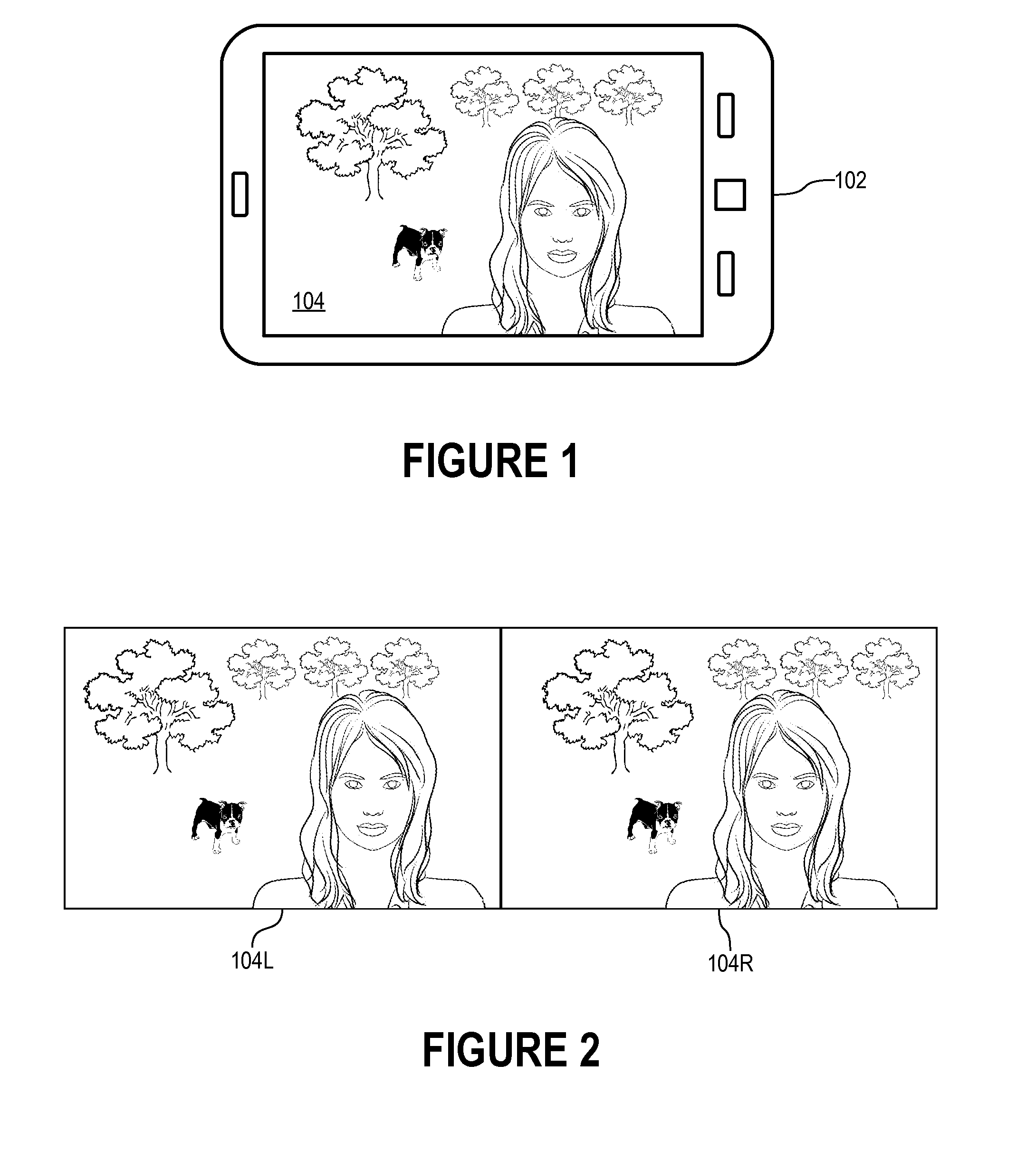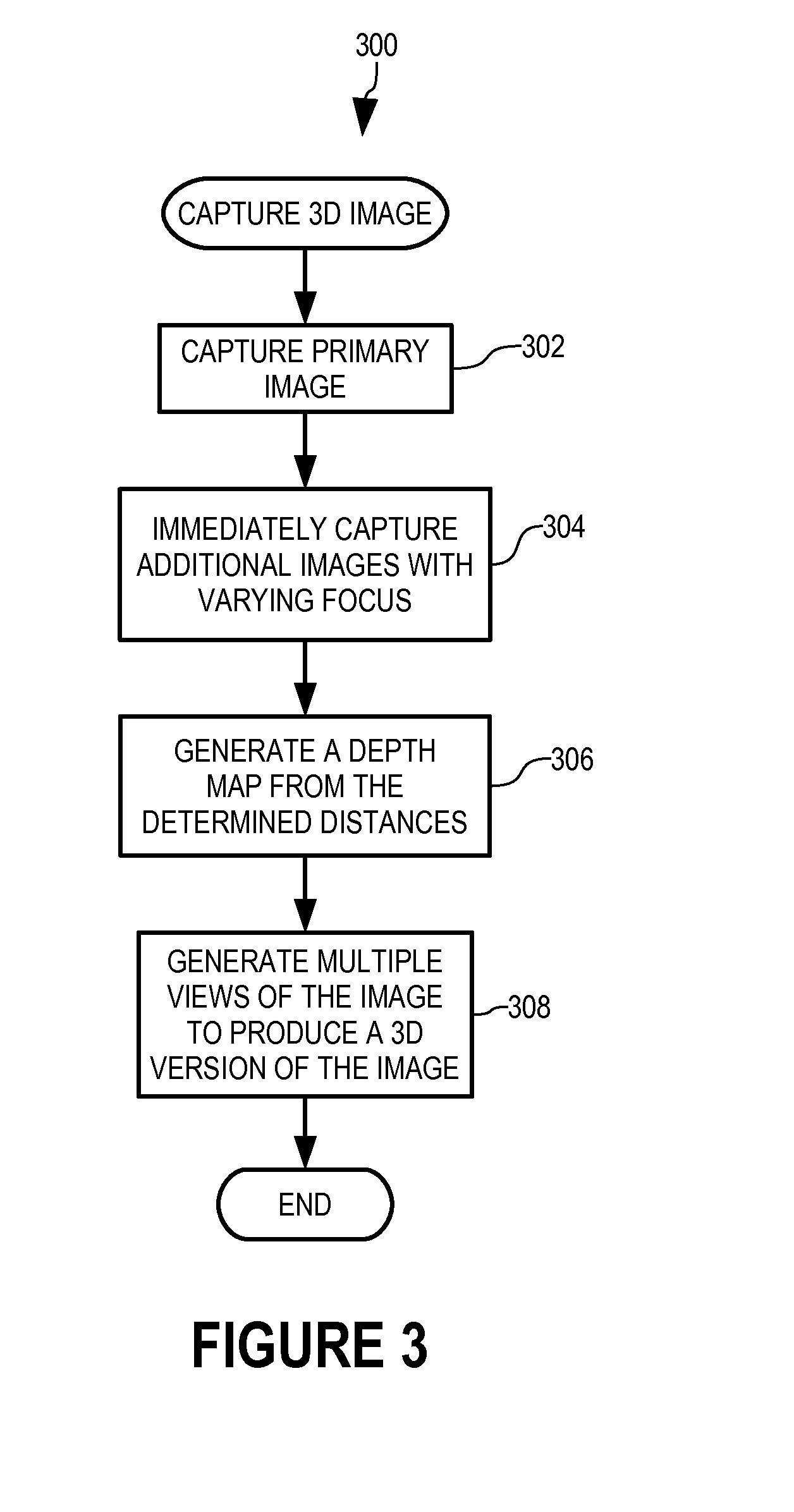Capture of three-dimensional images using a single-view camera
a three-dimensional image and camera technology, applied in the field of image capture systems, can solve the problems of difficult, physical pain, and difficult for human viewers to perceive the skewed images as a single three-dimensional image, and all cameras in circulation are incapable of capturing a three-dimensional imag
- Summary
- Abstract
- Description
- Claims
- Application Information
AI Technical Summary
Benefits of technology
Problems solved by technology
Method used
Image
Examples
Embodiment Construction
[0029]In accordance with the present invention, a camera 102 (FIG. 1) captures a two-dimensional image 104 and, while camera 102 continues to point at the subject matter of image 104, manipulates focus of camera 102 to provide information regarding the distance from camera 102 of objects shown in image 104. In a manner described more completely below, camera 102 uses the distance information to produce a depth map of image 104 and uses the depth map to produce at least two views 104L and 104R (FIG. 2) of image 104 to thereby provide a three-dimensional version of image 104.
[0030]To ensure that camera 102 continues to point at the subject matter of image 104 while manipulating focus to determine distances of objects in image 104, camera 102 manipulates focus to gather distance information as quickly as possible after capturing image 104. The varying of focus settings nearly contemporaneously with capture of image 104 allows logic within camera 102 to determine respective distances of...
PUM
 Login to View More
Login to View More Abstract
Description
Claims
Application Information
 Login to View More
Login to View More - R&D
- Intellectual Property
- Life Sciences
- Materials
- Tech Scout
- Unparalleled Data Quality
- Higher Quality Content
- 60% Fewer Hallucinations
Browse by: Latest US Patents, China's latest patents, Technical Efficacy Thesaurus, Application Domain, Technology Topic, Popular Technical Reports.
© 2025 PatSnap. All rights reserved.Legal|Privacy policy|Modern Slavery Act Transparency Statement|Sitemap|About US| Contact US: help@patsnap.com



